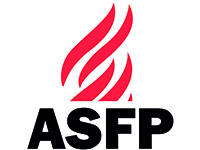Sir Ken Knight’s report to the Rt. Hon. John Denham MP, Secretary of State for Communities and Local Government, confirms that the passive fire protection (PFP) measures, incorporated as part of the design and fabric of a building, have for many years served as the fundamental basis for reducing the spread of fire and loss of life.
The ASFP has long campaigned to ensure that all PFP products and systems comply with recognised industry standards, and that such products and systems are installed by competent people who fully recognise and understand the significance of the fire safety measures being installed.
To assist this clear objective, the Association has produced a number of specific Guidance Documents and Codes of Practice that are designed to inform and improve the current unsatisfactory situation.
It is noted, says the ASFP, that Sir Ken Knight proposes that special consideration should be given to reminding specifiers, main contractors and installers (as well as those responsible for building safety management) of the need to consult all available information when undertaking works involving the removal, alteration and/or the replacement of in-situ passive fire protection.
To this end the ASFP has already launched a campaign entitled ‘Fire and your legal liability’ to improve awareness among those responsible for the specification, provision, installation and maintenance of fire protection measures in buildings. The campaign is being supported by Local Authority Building Control (LABC), the Heating & Ventilation Contraction Association (HVCA) and Heating, Ventilating & Air Conditioning Manufacturers Association (HEVAC).
The Association will replace its existing industry guidance publication on the fire performance of fire stopping and penetration seals, the ‘Red Book’, with a new updated 3rd Edition in October 2009; and is drafting an additional Code of Practice for the installation and inspection of fire stopping in existing buildings, for publication in 2010. Such an approach says the ASFP, is essential to ensure that all those involved in the Regulatory Reform (Fire Safety) Order process are able to understand and meet with their obligations.
In the meantime, the ASFP has offered its full support and expertise to assist the progression of the Chief Fire & Rescue Adviser’s report, its emerging issues and areas for consideration.
Lakanal House Fire Report Welcomed by the Association for Specialist Fire Protection
| T | + 44 (0)24 76 935412 |
|---|---|
| E | info@asfp.org.uk |
| W | Visit Association for Specialist Fire Protection (ASFP)'s website |
| Specta House, Westwood Way, Westwood Business Park, Coventry, CV4 8HS |


